
Overt queer fragrance themes are a relatively new phenomenon. For some niche brands, these concepts not only inspire their olfactive processes, but equally function as extensions of their own deeply personal narratives. How is fragrance queer? For these six vanguard voices, the answer to this question is as intimately raw as the captivating stories that they bottle.

(left) Brent Leonesio (right) Smellbent Modern Love (2017)
In your opinion, how is or does fragrance queer? How does this queer understanding of olfaction influence your brand’s philosophy or creations?
It took me more years than I would care to admit before I realized that everything, I created was somehow autobiographical. The concepts, the feelings, the stories I was telling with my work had come from my experiences. It is hard to separate the queerness from the queer fragrance. My experiences and sensibility are interwoven in my work, whether or not that is apparent to myself or to my audience. The themes my brand has played with over the years have always originated from a somewhat irreverent (i.e. camp) approach. I have explored hero worship (Gypsy and I Want Your Sex), queer lust (Commando and Werewolf Lumberjack) and even taken a dive through a catalog of personal histories, which unbeknownst to my customers, are rooted in love and sexual experiences (Gelty as Charged, Never Say Never and Artist Studio to name a few).
Are there any specific moments or people from queer history especially inspirational to your work?
I discovered Robert Mapplethorpe in a Borders Books in 1995 in Akron, Ohio. I was 13 years old, and saw into a world that bewildered and excited me. I could not believe what I found – how could this be on the shelf next to Manet?!? Granted, kids growing up now probably do not have to look past their browsers to find images of queer sex, but what I discovered profoundly changed what I thought the world was and what my life could look like. A few years ago, I used Mapplethorpe’s images as the inspiration for a series of perfumes called “Body Language” – I thought it was only fitting since he helped me grow into mine.
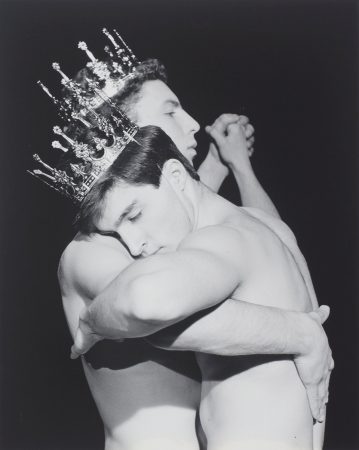
Two Men Dancing – Robert Mapplethorpe (1984)
What expectations do you have for the future of queer fragrance?
Every day I am humbled with the range and openness of gender expression and sexual identities that younger generations make for themselves. No longer are binaries enough. I think gender labeling disappeared from most niche perfume quite a while ago but how can these new voices add to the continually evolving scent-scape? The medium must always grow. The proliferation of access to aroma chemicals and high grade natural ingredients democratized perfume making in the middle aughts. Now, with a palette at their fingertips, I look forward to seeing how scent intersects with these ever-expanding identities.
Do you feel there is still something important missing from the larger discussion on queer fragrance?
For queer people, the body has always been a site for political transgression and action. How do we anoint the body in times of change? How can we use perfume to better understand the experience of queer people? And most importantly, are the voices of our community fully expressing the range of identities and experiences of the world at large?
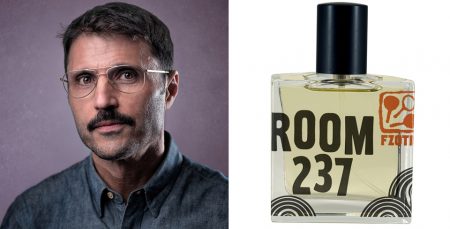
(left) Bruno Fazzolari (right) Fzotic Room 237 (2015)
In your opinion, how is or does fragrance queer? How does this queer understanding of olfaction influence your brand’s philosophy or creations?
I see myself as someone who makes refined and inventive scents for people who want something different, but still highly wearable. FZOTIC is a brand for anyone. It’s not a queer brand per se, but I recognize that I bring a queer sensibility to the way I work and I hope that makes all my customers’ lives better. Since I’m self-taught as a perfumer, I had a lot of surprises in my self-education. When I first started creating scents, I wanted all of them to be unisex. I discovered it is actually very hard to pull off. I would develop a fragrance, make a tiny modification, and then suddenly discover it was way too masculine or feminine. But the thing is, there is nothing inherently masculine or feminine about an odor. You don’t smell jasmine on the breeze at night and think it’s feminine. You simply think it smells good! Exactly how that pleasant odor changes into a gendered statement is fascinating to me.
Several of my scents, like Room 237, Zdravetz and Feu Secret, try to approach gender a little differently. Room 237 was inspired by the movie The Shining and the 20’s era hotel of horror. I came across men’s fragrance formulae from that time and noticed many had much more floral notes than we would accept now. So I created what is essentially a jasmine-on-steroids men’s fragrance using an overdose of certain naturally-occurring jasmine molecules—at that concentration it smells plastic, not floral, like a vinyl shower curtain in a super clean bathroom.
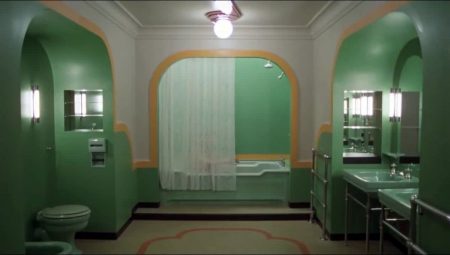
Woman in shower from The Shining – Stanley Kubrick (1980)
Feu Secret is inspired by the always ambiguous iris root. When you smell iris butter, one of the most expensive materials in the world, it smells truly unisex, or maybe even trans: it is both woody and floral. But most of the time iris gets cast as a hyper-feminine, floral powerhouse. In Feu Secret I wanted to bring back its genderfluid quality; I wanted to leave it up to the wearer to decide. Zdravetz is a crazy rose, leather and fresh scent: defiantly genderless. One thing I have noticed since I deal with the public directly is that men, especially straight men, love fragrance. However, depending on their cultural background, they are not always allowed to love it as much as they want to. When I work a trade show, I see straight couples where the man is often the one who is most drawn to explore the scents, but I can tell he feels ashamed or bashful about it. That’s sad to me. The queer angle here is that we should all be free to celebrate the things that inspire us and make us whole, vibrant human beings.
Lynette Reed, Fluid Fragrances
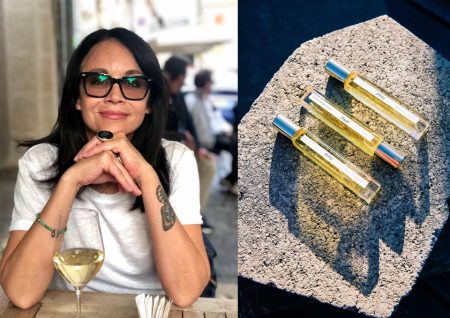
(left) Lynette Reed (right) Fluid Fragrances I AM A HUMAN BEING (2019)
In your opinion, how is or does fragrance queer? How does this queer understanding of olfaction influence your brand’s philosophy or creations?
At Fluid Fragrances, we believe that fragrance is genderless. Anyone should wear what they like and not feel confined to was has traditionally been referred to as “masculine” or “feminine” fragrances. Our collection is I AM A HUMAN BEING (the five names of the fragrances) because we believe we are all just human and don’t need to be labeled in any other way.
Are there any specific moments or people from queer history especially inspirational to your work?
I am the mother of a young fashion designer named Harris Reed. Harris is leading the genderfluid fashion movement in London. They are genderfluid and came out to me as gay when they were 9 years old. They have inspired me since the day they were born. Being their mother has been the most incredible journey a parent could ever hope for.
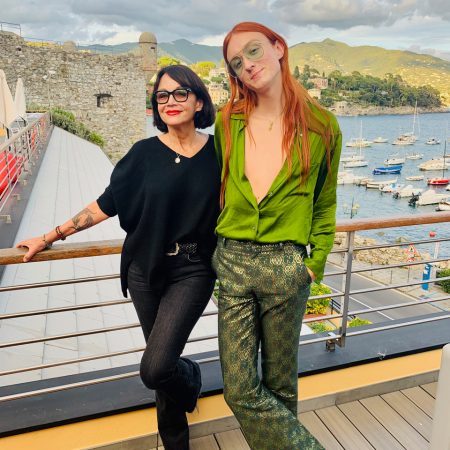
Fluid Fragrance’s Lynette Reed with designer son Harris Reed
What expectations do you have for the future of queer fragrance?
My expectations go beyond fragrance as I hope that someday we can all just be accepted for who we are and not have to be labeled. That is the whole point of Fluid Fragrances.
Do you feel there is still something important missing from the larger discussion on queer fragrance?
I feel it is making progress but too often people just jump on the bandwagon without any real understanding of what it really means in an attempt to capitalize monetarily. But in saying that, the more people that promote it, the further the message will go.
Killian Wells, Xyrena
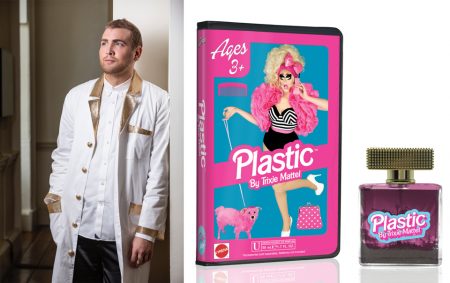
(left) Photo by Jeff Gilbert. Custom Labcoat by Perry Meek. (right) Xyrena Plastic by Trixie Mattel (2017)
In your opinion, what is a queer fragrance? How does this queer understanding of olfaction influence your brand’s philosophy or creations?
Queer artists inherently go against the grain. It’s in our DNA. When you grow up knowing there is something different about yourself, at some point you make the choice to blend in with the crowd or blatantly stand out from it. I’ve always had a ‘Fuck it! I’ll do what I want’ mentality and that’s clearly reflected in Xyrena’s brand ethos. I make art for myself first and foremost. It’s just a plus when other people like it.
Are there any specific moments or people from queer history especially inspirational to your work?
I am a huge Andy Warhol fan. He was a controversial and unapologetic gay artist in a time when being openly queer was not anywhere near as accepted as it is today. I relate to Andy’s disdain for the status quo, and my own meta use of consumerism in what you might call olfactory pop art is very much a nod to his legacy.
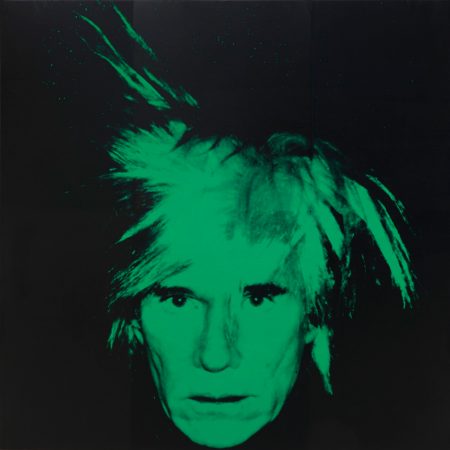
Self-Portrait Andy Warhol (1986)]
What expectations do you have for the future of queer fragrance?
I have been pleasantly surprised to find that Xyrena (as a queer-owned brand) has so many vocal fans of all genders, races, and orientations; I believe that’s a real testament to the broad accessibility and appeal of the brand, and an embrace of queer art in general. Overall I expect a continued growth in the public’s interest of fragrance as art (not just a commodity) and a greater appreciation for the queer artists behind the scents.
Barbara Herman, ERIS PARFUMS
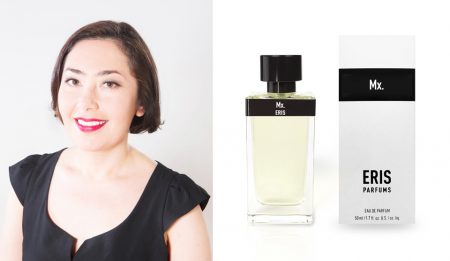
Barbara Herman (right) ERIS PARFUMS Mx. (2017)
In your opinion, how is or does fragrance queer? How does this queer understanding of olfaction influence your brand’s philosophy or creations?
Fragrance is queer because it is easier to resist seeing a fragrance as binary, masculine or feminine (although we certainly try!); it is much easier to ignore those categories and just wear what we want – to fluidly traipse through a week wearing a floral, then a leather, and then maybe an oud or a fougère. This kind of “cross-dressing” is harder to do with fashion—although it’s becoming more the norm. One of the things that intrigued me the most when I began writing about perfume was the way that so many fragrances of the early 20th century did not conform to the rigid gender conventions of contemporary perfume codes (florals for women, leathers for men, etc.) How ironic, I thought, that in more repressed times, fragrances seemed to be bolder, more queer. Women had so many more options – florals, tobaccos, leathers, animalics. And when you dig further into global fragrance history (as with fashion history), what’s considered masculine or feminine isn’t fixed; it’s dependent on time and place and is ever-evolving.
Vintage perfume’s boldness and queerness was a big inspiration for both my book, Scent and Subversion and ERIS. For example, ERIS favors animalic notes to “clean” scents, unconventional icons to banal celebrities. ERIS, the Greek goddess of trouble-making, doesn’t play by the rules. The most explicitly queer ERIS fragrance is the genderfluid fragrance Mx. (pronounced “Mix”), named after the gender-neutral title that is replacing “Mr.” and “Ms.” for those who don’t identify with binary gender. It “blurs and mixes the boundaries between traditionally masculine and feminine perfume notes, to create a luscious woody animalic fragrance for all genders.”
Are there any specific moments or people from queer history especially inspirational to your work?
There are so many! Here are just a few: I studied at UC Berkeley with philosopher Judith Butler, whose book Gender Trouble put a lot of these queer ideas (and terms) we take for granted now, on the map. Perfumer Germaine Cellier is a queer perfume icon. Her fragrances are the linchpin of Scent and Subversion and my thinking about gender, queerness, and perfume. Whether she was a lesbian or not (it’s purported that she was), she composed what I called in my book the “butch / femme” duo of the vintage perfume world, Bandit and Fracas — both from the 1940s, both made for women. She definitely played with the gender codes of perfume in a very campy and sophisticated way. I was thrilled to learn that tough guys like Marlon Brando and Keith Richards wore women’s perfumes — Brando wore Balmain’s Vent Vert (another Germaine Cellier fragrance!), according to ex Rita Moreno, and Richards wears Patou’s Joy under his armpits, according to GQ magazine. I am happy when I know men wear and love ERIS’s floral perfumes. I mean, if it worked for Brando… So, I think artists often transgress gender and sexuality boundaries, so artists like Robert Mapplethorpe, Patti Smith, and Prince and their genderfluid style are also inspirational.
I have long been a fan of Mx. Justin Vivian Bond, a trans / queer cabaret entertainer. And in 2015, I wrote about how the Oxford English Dictionary included the honorific “Mx” for the first time and that Mx Bond had been an early adopter. Viv was very much part of the inspiration for ERIS Mx.
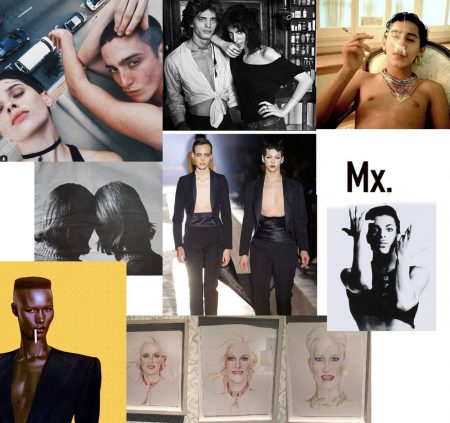
ERIS PARFUMS Mx. Mood Board
What expectations do you have for the future of queer fragrance?
I think eventually we’re just going to get rid of the idea that a fragrance is masculine or feminine and simply categorize a scent according to the family it belongs to (Citrus, Floral, Woody, Leather, etc.) But for me, we won’t even need to talk about “queer” fragrances. We just will not talk about gender in fragrance at all.
Do you feel there is still something important missing from the larger discussion on queer fragrance?
I know a lot of people are like, “Ugh, I’m sick of hearing the word ‘genderfluid’ or discussions about gender in perfume.” I mean — I agree! So am I! But until we address the weirdness of categorizing fragrances as masculine or feminine and force a discussion of queerness / genderless-ness in fragrance, we will continue to arbitrarily divide perfume into these meaningless categories. I wanted to name a perfume Mx., for example, to mark a cultural moment when gender is really being questioned. And I welcome the time when gender is not discussed in relation to perfume at all.
Douglas Bender, Charenton Macerations
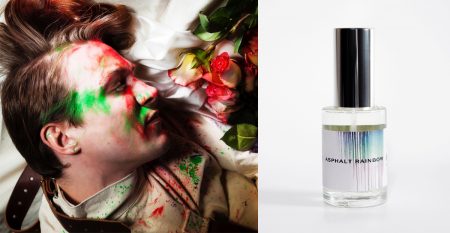
(left) Douglas Bender. Photo by Hope Davis (right) Charenton Macerations Asphalt Rainbow (2015)
In your opinion, how is or does fragrance queer? How does this queer understanding of olfaction influence your brand’s philosophy or creations?
At Charenton Macerations, “The Nose is Queer.” The statement is a declaration of my own identity. It also references what I believe is the undeniably queer nature of perfumery: an art form that involves ripping odors from their natural environs, remixing and recontextualizing them with altered purpose. To compose perfume is to reframe narrative. Even the sense of smell itself is quite queer. Our brains possess this completely unique way to process scent. The language it speaks is distinct and emotionally charged. It is ineffable, yet inescapable. It even connects to ways in which we construct our sense of self, especially in relation to our discussions about the body. At its core, fragrance is pure queer.
Are there any specific moments or people from queer history especially inspirational to your work?
Queer history touches every olfactive narrative I construct. For Christopher Street, it is the heart and soul of story: 400 years of NYC history and olfactive memory folded onto themselves as a metaphor for how we see ourselves in relation to our past. For Asphalt Rainbow, it inspires the reappropriation of the rose: a classic standard of beauty reconfigured into a modern piece of street art. And for Eye, Hatshepsut, it informs my fluid approach to identity: common anosmia-prone materials used to craft a perfume that smells unique to every nose that smells it. I tend to rely on not just queer stories, but actively attempt to queer olfactive structures.
Outside of my fragrance work, I am known to be a bit of a thirsty sponge for queer media. I am an avid fan of Gregg Araki, especially his “Teen Apocalypse Trilogy.” Since first collaborating with Ralf Schwieger, I have been re-reading a lot of Tennessee Williams and James Baldwin. I can easily get lost in the worlds of Perfume Genius and Janelle Monae (two words: Vagina Pants). But in terms of one person who’s process really inspires me to keep pushing myself, I am ever in awe of Wolfgang Tillmans.
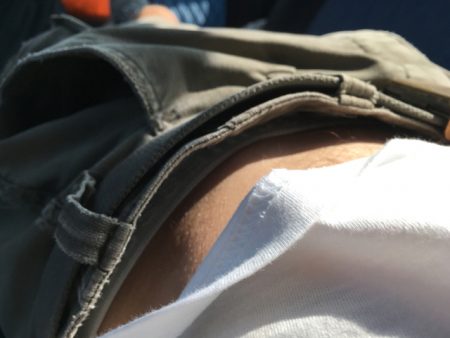
The Air Between Wolfgang Tillmans (2016)
What expectations do you have for the future of queer fragrance?
I expect more of it. More resistance to binary reductionism. More room to get crazy and experimental. More access to materials. But most importantly, more authentic stories crafted and owned by an even more diverse group of queer creators. Our future needs to as multifaceted and multicultural as the community we represent.
Are there any other thoughts on queer fragrance you might like to add to the conversation?
I want to take this opportunity to personally thank everyone who helped bring this part of my queer fragrance and fashion series to life. I see you. I appreciate all of your hard work. Most of all, I am humbled and grateful to be granted such an unvarnished glimpse into your worlds. Thank you. Thank you. Thank you.
~Douglas Bender, Guest Contributor and Founder of Charenton Macerations
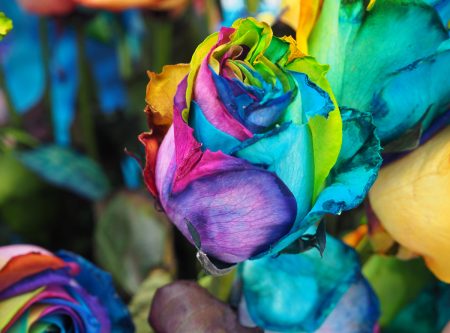
photo by Douglas Bender
Did you miss Part 1, 2, 3 and most recently Part 4 of Queer Fragrance and Fashion? Please take a look back on each installment in this series Douglas Bender began seven years ago. Doug… Mad Respect for all the work you have done on this project and how much light you have brought to our pages on queer fragrance, and its future– a subject few discuss –Michelyn Camen, Editor in Chief. Happy Pride Day!
Please join in the discussion!!!
You can follow us on Instagram @cafleurebon @cm_fragrance @smellbent @fzotic @fluid_fragrances @xyrena @erisparfums
